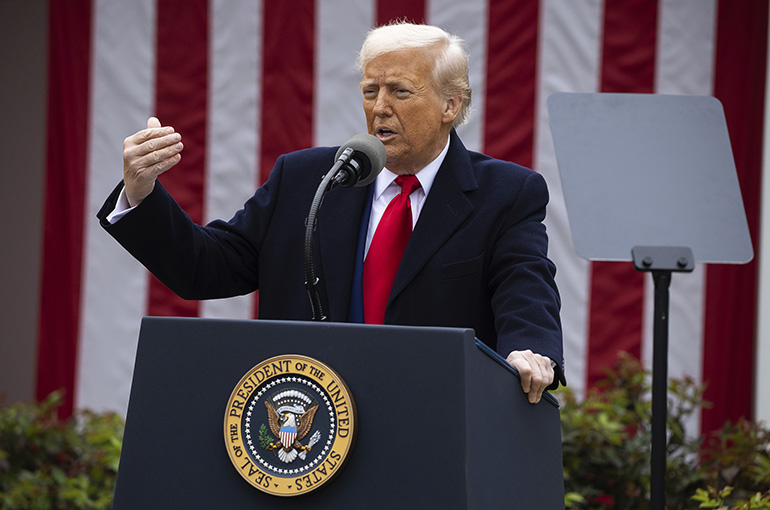 The Two Fallacies of ‘Reciprocal Tariffs:’ a Farce in Trade Policy
The Two Fallacies of ‘Reciprocal Tariffs:’ a Farce in Trade Policy(Yicai) April 10 -- The so-called reciprocal tariffs advanced by United States President Donald Trump are a misnomer and suffer from two fatal flows.
The White House imposes a 10 percent additional tariff on products imported from countries that have a trade deficit with the US, such as the United Kingdom.
Counties that have a trade surplus with the US will be levied additional tariffs based on the ‘0.5 x k*’ formula, where k* represents the “comprehensive tariff equivalent rate” of US trading partners. The “comprehensive tariff equivalent rate” is calculated by dividing a country’s trade surplus with the US by its exports to the US.
But these “reciprocal tariffs” have two fatal flaws.
The first one is its conceptual foundation. The White House formula attributes US trade deficits or bilateral imbalances to trading partners’ trade barriers or unfair practices. But macroeconomic principles indicate that trade imbalances stem from the gap between savings and investment.
If South Korea’s trade surplus with the US is due to its savings exceeding investment, then the US trade deficit with South Korea should be due to insufficient savings in proportion to investment.
For example, after the US discovered a new shale gas field in Texas, local residents expected their income to increase, which led to a boost in consumption and investment, ultimately resulting in a wider trade deficit. But the US blamed this on unfair trade by other countries.
Based on this logic, the US also adopts unfair trade practices because it has a large and continued service trade surplus with many countries.
The second flaw is erroneous assumptions. The tariff formula assumes that raising US tariffs will reduce imports without affecting exports. However, tariff hikes are often followed by retaliatory measures, which cause a sharp drop in exports.
But US exports would decline even without retaliation. After Trump imposed high tariffs on China during his first administration, the US-China trade volume contracted, but the US trade deficit with China did not show any signs of improvement.
While Trump insists that his trade war will strengthen the US economy, the stock market tells a very different story. US stocks plunged over 10 percent within 48 hours after the policy announcement. US households now have to deal with both rising daily goods prices and shrinking pension assets.
(The author is Wei Shangjin, academic advisor to the China Finance 40 Forum and professor of finance and economics at Columbia University)
Editor: Futura Costaglione